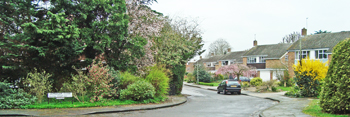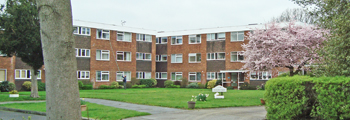Hospital for Officers
Convalescent (military)
The Prince of Wales Hospital opened on 18th June 1915 in Jamnagar House (previously known as Thorncote), Staines. The property, the country house of the Maharaja Jamsahib of Nawanagar (1872-1933), had been offered by him to the King for use as a hospital for British officers. The Maharajah, better known as the cricketer Prince Ranji, who took a great interest in gem stones, served as a British Army Staff Officer during the war (eventually being promoted to Lieutenant Colonel). He also gave his fleet of cars and lorries to the British Army to help with the war effort.
The Maharaja had fully equipped the Hospital and he and the Maharajas of Kashmir and Patiala had promised to jointly finance it for the duration of the war and as long after as would be required.
By the King's wish, the Hospital was placed under the control of the War Office, who gave it the name of the Prince of Wales Hospital for Officers.
The Hospital had 38 beds (but could accommodate more if necessary) and was affiliated to the Horton (County of London) War Hospital. It was staffed by a Matron and 4 Sisters, assisted by members of the Middlesex/38 Voluntary Aid Detachment (V.A.D.) The Matron wore the uniform of a Trained Lady Superintendent of the V.A.D., as she had belonged to the St John's Territorial Force Nursing Association before the outbreak of war. It consisted of a black mercerized poplin dress with a distinctive military cape, also black, with a red border, to which the letters "T.N." were affixed. A soft white collar was worn with the cape and an Army cap of spotted muslin. The Sisters wore a grey uniform with scarlet epaulettes and belt, a soft flat muslin collar and an Army cap. All members of the nursing staff wore a distinctive badge decorated in blue and red enamel with the Prince of Wales feathers and a narrow gold border; those who worked at the Hospital for six months or more were allowed to keep it.
The wards were named after British generals, such as Kitchener and Haig, and were comfortably arranged with views from the balconies.
The Maharaja's personal attendant had remained with the house as butler, and was placed at the disposal of Matron to ensure the smooth running of the Hospital.
The house had a number of bathrooms. The kitchen was equipped with gas cookers as well as the range, and a good cook was employed. The former Billiards Room became a mess room for those patients who were able to come down for meals.
The Hospital had some 10 acres of grounds, with well-kept gardens and greenhouses. As it was by the banks of the Thames, those patients well enough were able to spend their time on the river, either fishing or boating.
The Hospital had a Massage and Electrical Treatment Department with the most up-to-date appliances, including a light bath, used before massage. The masseuse wore an overall of white drill with three box pleats, a soft collar, elbow sleeves and pockets, all outlined in black, with a loose black patent leather belt around the waist. In the ward devoted to massage cases the bedsteads were at an unusual height, so that the masseuse did not have to tire her back by stooping over the patient.The Hospital closed on 20th February 1919.
Present status (April 2010)
The house has been demolished and its site is now occupied Penton Court, an apartment block.

The entrance to Jamnagar Close, which follows the line of the original drive.

Penton Court has been built on the site of the house.
(Author unstated) 1915 Gifts from India. British Medical Journal 2 (2861), 654.
(Author unstated) 1916 The Prince of Wales Hospital, Staines. British Journal of Nursing, 26th August, 175-176.
(Author unstated) 1917 The Matrons' Council of Great Britain and Ireland. British Journal of Nursing, 14th July, 23.
www.facebook.com
www.topfoto.co.uk (1)
www.topfoto.co.uk (2)
Return to home page